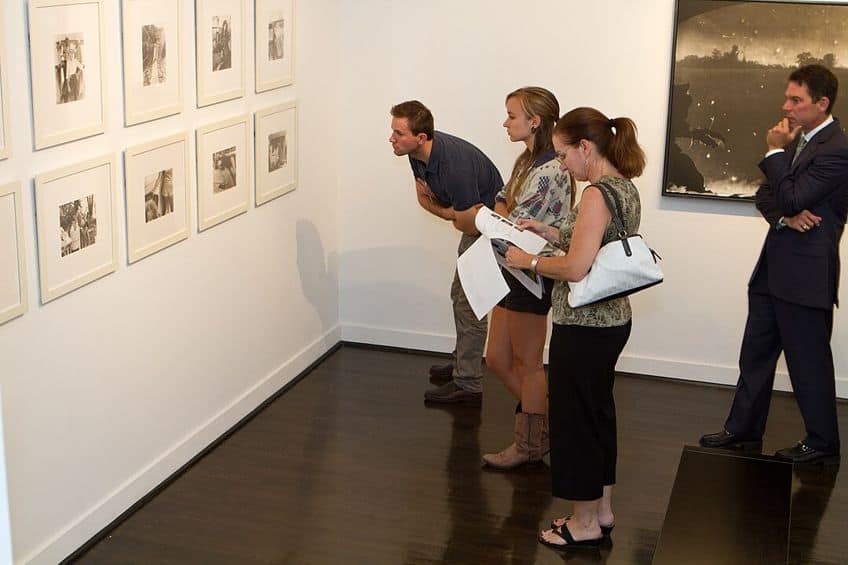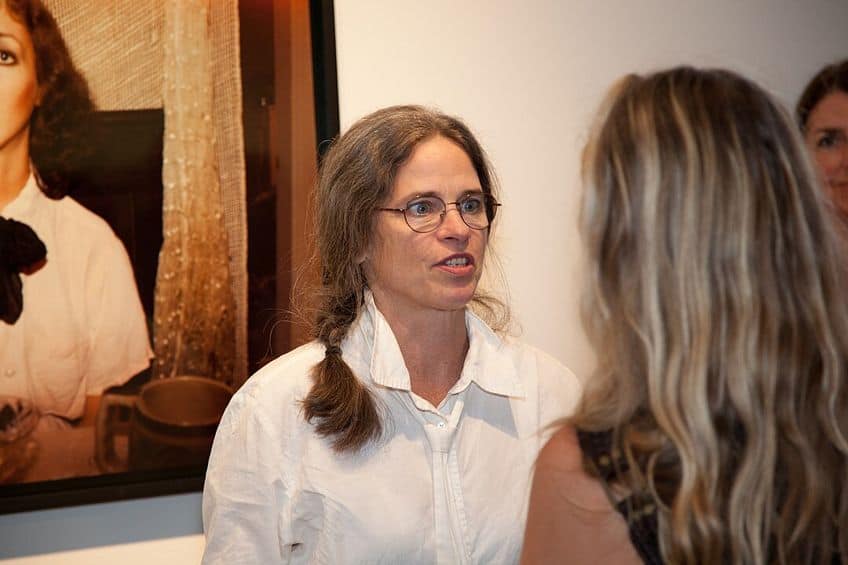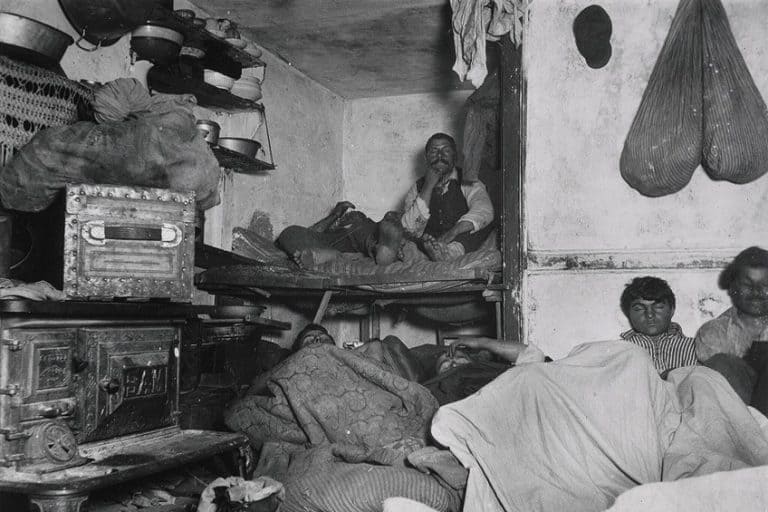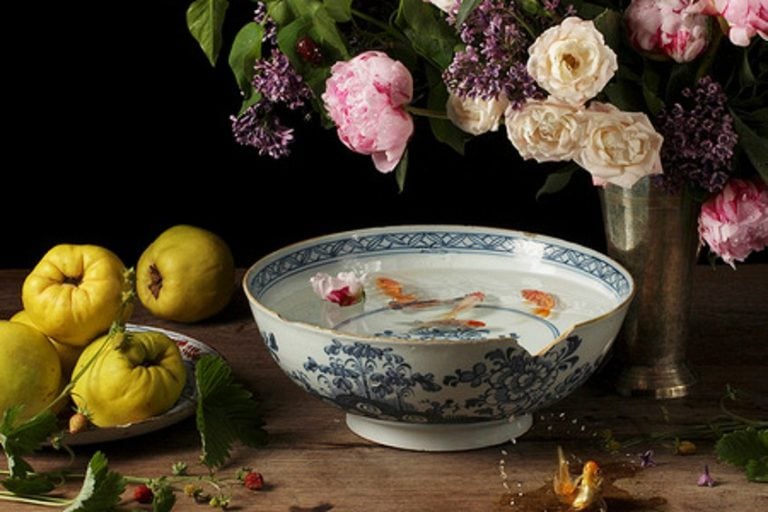Sally Mann – The Photographer Who Was Unafraid of Nudity
Sally Mann is not your conventional American photographer. There is not a moment in photographic history where an artist willingly chooses to tackle controversial subject matter, yet Sally Mann is not like other photographers. The famous American photographer is best known for her black-and-white portraiture of young prepubescent and adolescent children, which continues to cause a stir in the arts community and the public sphere. In this article, we will unpack Sally Mann’s biography to give you insight into her background, career, and art style that won her multiple prestigious awards and fellowships.
Table of Contents
When Is Nudity Controversial? The Life and Art of Sally Mann
It is no secret that most artists are open to transforming almost any subject into a work of art. There is no shortage of controversy when it comes to the art world, and in this case, Sally Mann’s photography is the perfect example of how controversy can manifest in cases of nude artwork. Sally Mann is a multi-award-winning American photographer who is famous for her portraits of children, and young women, and her approach to photographing her own children in her 1992 series Immediate Family.
| Artist Name | Sally Turner Munger (Sally Mann) |
| Date of Birth | 1 May 1951 |
| Nationality | American |
| Associated Movements, Themes, and Styles | Large-format photography, landscape art, death, decay, black-and-white photography, portraiture, the American South, and Contemporary art |
| Medium | Photography |
| Famous Artwork | ● Untitled from the “At Twelve” Series, Lisa, and Tab (1983 – 1985) ● Damaged Child, 1989 (1989) ● At Water Springs (1991) ● Untitled (Self-Portrait) (2006 – 2012) |

Sally Mann’s photos have earned her many prestigious awards, including a Guggenheim fellowship, a Centenary Medal from the RPS, and an Andrew Carnegie Medal for Excellence in Nonfiction. Overall, her portfolio showcases the breadth of her artistic style, which ranges from soft, textural, and sensual visuals to atmospheric landscapes of the deep American South. Below, we will dive into the complexities of Sally Mann’s biography by reviewing the details of her life, art, and career.
Early Life and Education
The details of Sally Mann’s biography offer one insight into the psyche of the artist and the narratives and themes promoted in her photography. Sally Mann was born in Virginia in 1951 as Sally Turner Munger to her father, Robert Munger, who was a medical practitioner, and her mother, Elizabeth Evans Munger, who managed a bookstore at Washington and Lee University. Mann was raised primarily by a woman named Virginia Carter since her own mother was not as connected to her as Virginia Carter was. Mann’s father was also an atheist and photographer, who introduced Sally to photography and inspired her later large-format work.
Sally Mann started photography when she was 16 and worked primarily in her hometown, Lexington.
Mann attended the Putney School and graduated in 1969, after which she schooled at Bennington College and Friends World College, where she obtained her BA (summa cum laude) at Hollins University. In 1975, she also earned her MA in creative writing from Hollins. Despite zero formal training in photography, Mann’s early passion and interest in the medium propelled her early career. Mann’s first image at Putney was an image of a nude classmate.
Early Career and Photographic Style
Mann became a photographer at Washington and Lee University and by the late 1970s, she held her first solo show at the Washington D. C. Corcoran Gallery of Art. The catalog for the exhibition was titled The Lewis Law Portfolio, since her first images included shots of the construction of the Lewis Hall Law building. Mann later used some of the images from her first series in her first publication titled Second Sight, which debuted in 1984. Throughout the 1970s, Mann’s photography began to mature as she expanded her artistic interests. She also regularly attended the Yosemite workshops by Ansel Adams Gallery.
Mann’s early photographs showcase themes of sensuality, and femininity, and explore abstract texture through close-up shots of tense moments emphasized by body language, angles, and creased drapery. Mann’s second series At Twelve: Portraits of Young Women was released in 1988, and was further criticized for Mann’s parental role and the portrayal of her young children in the nude. In the series, Mann shares the experiences of a 12-year-old girl through confusing emotions and vulnerable youth. Mann intended to capture the girls in their strength instead of their vulnerability. Throughout her career, Mann employed an 8 x 10 bellows camera, while exploring the technicalities of bromoil, platinum, and wet-plate collodion processes.
Mann’s style is characterized by her black-and-white large-format technique, which is complemented by her documentary style.
Mann’s photography also extends to landscape images of the American South, which exude a sense of Surrealist photography with their atmospheric effects, which give her landscapes an eerie feeling. Mann’s photography also encompasses her inner life, which includes her close family and three children, who were the main models for her intimate series Immediate Family (1984–1994). Mann’s interest in 19th-century photography techniques such as the wet collodion process is also seen in her early work, which displays an antique look and feel.
Controversies and Criticism
While Sally Mann’s photography carries nostalgic tones of motherhood, love for family, and a rather personal and intimate lens into the artist’s appreciation for her family, her series, Immediate Family, generated significant criticism for its borderline and contentious display of nudity, also bordering child pornography. This is where the complexity of artistic freedom and the issues of censorship versus the protection of children come to the forefront. Mann’s Immediate Family series features scenes of her children, who were all under the age of 10 when photographed, shot in 65 black and white scenes in nature.
The series was photographed at Mann’s family’s remote summer cabin and showcased typical childhood activities such as her children playing, napping, and swimming in the nude. Mann’s photography thus became difficult to classify since it was neither documentary nor portraiture, but rather a subliminal third thing that makes the viewer question the ethics of being an artist, who is also sharing her private family life as an album of artistic work presented for exhibition, and perhaps for sale. One goes a few steps forward to question, at what point her series promoted child pornography, despite her merit as an artist with artistic freedom, a mother, and the complexities of nude art when it involves children.

Other arguments that solidify Mann’s defense in the public eye include the perspective where the onus is on the viewer, who can interpret societal codes such as themes of motherhood, from an image that holds the tension of “a look into someone’s private family life”. The exhibition of Mann’s private life in the public sphere is what makes her work powerful and controversial. One might also note that Mann’s series debuted in the 1990s, which was a period when child pornography was very much at the forefront of government priorities and resulted in Mann having to self-censor her work.
Those who stood behind Mann and her photography criticized the media for manipulating cultural works and ultimately delegitimizing Sally Mann’s photography. Photographs are also tools in the eyes of the law, and as such, could also be used as evidence against the photographer. The mass reproach of Mann’s photography had significant implications on the art world and the medium since debates involving feminist groups and the notion and function of nudity in art were brought to the fore. It had also been speculated that by enabling the photography of nude children, one also has to consider that film developers and associated parties were capable of withholding and distributing material that was deemed immoral.
A stronger argument for the sake of the children involved in Mann’s photographs includes her role as an artist overriding her parental responsibility to protect her children.
Mann has been criticized for neglecting her parental duty for the financial benefit of profiting off her photos of her nude children. Other critics accuse Mann of abusing her power dynamic with her children and placing them in sexualized positions for exhibition to the public eye. According to Mann, she did not foresee the controversy that her images could bring since she approached her work from the lens of a mother-first, given that her family’s experience was natural and normal for them to roam about in the nude. Mann’s own childhood experience was similar since she also recalled walking around her home freely in the nude, and as such, raised her kids in the same way.
According to a child psychiatrist, Dr. Aaron Esman, nude images of children should not appear particularly erotic or stimulating to anyone other than a “dogmatic religious fundamentalist” or “a case-hardened pedophile”. He also stated that Mann had no intention to jeopardize her kids or use them for pornographic purposes. In 2016, one of Mann’s three children, Emmett, committed suicide after suffering from schizophrenia and trauma from a car accident. Mann’s two daughters: Jessies, became an artist, while Virginia, became a lawyer.
Notable Awards and Collections
Sally Mann has received many prestigious awards for her contributions to photography, including the Honorary Fellowship of the Royal Photographic Society in 2012 in the United Kingdom and the Centenary Medal from the Royal Photographic Society in 2020. Mann was also named America’s Best Photographer in 2001 by Time and was inducted into the International Photography Hall of Fame in 2021. In the same year, Mann also bagged the international Prix Pictet award.
Today, Mann’s work can be found in the collections of many art institutions, including the National Gallery of Art, the Metropolitan Museum of Art, the Museum of Fine Arts, Boston, and the Whitney Museum.
Special Publications and Recognition
Sally Mann received her first significant recognition from Aperture in 1995, which also featured the works of Barbara Kruger, Henri-Cartier Bresson, and Clarissa Sligh. Mann also produced another series between 1984 and 1994 titled Family Pictures, which again focused on her three children, who were under 12. This time, her series touched on darker narratives such as death, and most relevant to her previous series, cultural perceptions of sexuality and motherhood.

Mann was also associated with Cy Twombly, whose studio she photographed between 1999 and 2012 in Lexington and documents her experiences with the great artist. From the 1980s, well into the 21st century, Mann continued to release new publications, which showcase her work in portraiture, landscape art, and personal memoirs. Since her official publication of Immediate Family in 1992, Mann also released Still Time in 1994, Deep South in 2005, Sally Mann: Proud Flesh in 2009, and Hold Still: A Memoir with Photographs in 2015.
Sally Mann also appeared in film and television references, with a short documentary film released in 1992, which received a nomination for an Academy Award in the category of best documentary. The film, titled Blood Ties: The Life and Work of Sally Mann, was directed by Peter Spirer and Steven Cantor.
Steven Cantor later directed a follow-up film titled What Remains: The Life and Work of Sally Mann (2004), which won the Grand Jury Prize for Best Documentary Film and best documentary at the Jacksonville Film Festival.
The Photography of Sally Mann
In 2006, Sally Mann went through a painful accident after she was flung from her horse, which suffered a sudden aneurysm mid-ride. Despite her broken back resulting from the accident, Mann still produced a series of self-portraits in ambrotypes, which were exhibited at the Virginia Museum of Fine Arts in 2010 in a show titled Sally Mann: the Flesh and the Spirit. Below, we will explore a few interesting photographs from Sally Mann’s career that provide insight into her creative world.
Before the Picture (1987)
| Date | 1987 |
| Medium | Gelatin silver print |
| Dimensions (cm) | 19 x 24.1 |
| Where It Is Housed | Private collection |
Before the Picture illustrates a snapshot moment of one of Mann’s children who appears solemn, and perhaps posed as such in front of a solid-colored backdrop in preparation for a shoot. The child is pictured fully clothed with her body language suggesting discomfort, nervousness, and perhaps dissatisfaction with her state, given that Mann’s children were photographed at their most relaxed while running freely in the nude.
The child stares directly at the camera, which makes one aware of their presence, and the emotions that the child must be experiencing.
Untitled (1988)
| Date | 1988 |
| Medium | Photograph |
| Dimensions (cm) | Unavailable |
| Where It Is Housed | Unavailable |
Untitled was shot in 1988 and serves as a chilling foreboding of the young man’s future and his relationship with the young girl next to him. Mann was inspired to photograph this peculiar image, which shows a young girl with a reluctant attitude posing next to her mother’s boyfriend. 22 months after this image was taken, the girl’s mother, whose presence evades the image, shot her boyfriend in the face and testified that he was harassing the young girl while she was away at work.
The image captures perhaps both victim, and perpetrator, with the tension of discomfort through the young girl’s body language, and the man’s fate.
Evolution (1993)
| Date | 1993 |
| Medium | Gelatin silver print |
| Dimensions (cm) | 47.6 x 56.5 |
| Where It Is Housed | Private collection |
Photographed at a beach, Evolution was shot to mimic the traditional scientific illustrations one would see in media of the evolution of humans from ape to man. Here, Mann takes a quirky and playful spin on evolution through her family and features her daughters standing at different incremental heights above her, moving towards the ocean instead of from it.
It is as one would expect in traditional representations of “fish to man” evolutionary narratives.
Book Recommendations
Sally Mann has published many books that you can explore further for insight into her visual landscapes. There have also been books published about Sally Mann’s work, providing insight into her workflow and the intentions behind her work.
Below are a few top book recommendations that you can consider when analyzing Sally Mann’s photos.
What Remains (2003) by Sally Mann
Perhaps not recommended for a coffee table feature, this book by Sally Mann offers a macabre meditation on mortality presented through a series of photos of decomposing bodies. While some fans prefer to view the darker shades of Mann’s career, others prefer her lighter work. This read is more suited to those intrigued by the themes of death and decay and is ideal for studying the use of the shock effect in Sally Mann’s photos.
- A more macabre five-part meditation on mortality
- A series of photographs of decomposing bodies confront us
- The ideal study for those interested in the use of shock effect
Deep South (2005) by Sally Mann
One can look forward to browsing through some of the most mystical and eerie photos of the American South captured by Sally Mann that showcase the unique qualities of 19th-century photography techniques. The book captured the landscapes of Virginia, Louisiana, Georgia, and Mississippi.
The vintage and timeless stills are considered to be Mann’s most thought-provoking series.
- A stunning collection of tritone landscape photographs
- Evokes the vintage images of the American South
- Captures visions of Louisiana, Mississippi, Georgia, and Virginia
Sally Mann: A Thousand Crossings (2018) by Sally Mann, Sarah Greenough, Sarah Kennel, Et al.
This is an excellent read for those interested in the experimental and haunting visuals of Sally Mann’s photography, which explores themes of desire, memory, family, and death through a collection of still-lifes, portraits, and landscapes. The publication includes five sections detailing many unseen works by Mann, which provide a full scope into some of her censored content that also questions notions of identity, history, race, and religion.

- A collection of portraits, still-lifes, and landscape photographs
- Separated into five sections exploring identity, history, and more
- Includes vibrant reproductions of her haunting photographs
There is no doubt that Sally Mann’s contributions to photography have raised some important questions about censorship and nudity in art when it comes to models who are also minors. Today, many photographers continue to appreciate Mann’s photography as a window into the macabre, wholesome, and mystic aspects of life that challenge society. Mann’s approach to nudity and the photography of children also incite the need for a more critical stance on the role of the artist, and the boundaries one needs to comprehend when creating unconventional works.
Frequently Asked Questions
Who Is Sally Mann?
Globally renowned photographer, Sally Mann, is a Contemporary artist who specializes in family portraiture and provocative black-and-white photos. Mann’s photography explores themes such as identity, death, family relationships, memory, and childhood through an introspective lens.
Why Is Sally Mann’s Work Controversial?
The controversial nature of Sally Mann’s work is due to the exploration of themes such as mortality and sexuality while promoting images of children in the nude. Mann’s photos have been criticized for promoting child pornography and challenging the boundaries of art and social norms.
What Photography Techniques Does Sally Mann Use?
Sally Mann incorporates a variety of photography techniques and is best known for her use of large-format cameras, as well as high-resolution images and natural lighting in her landscape images. Mann’s photography reflects her preference for ethereal effects and atmospheric lighting achieved through long exposure, and older photography processing techniques such as platinum printing and wet plate collodion methods.
Jordan Anthony is a film photographer, curator, and arts writer based in Cape Town, South Africa. Anthony schooled in Durban and graduated from the University of the Witwatersrand, Johannesburg, with a Bachelor of Art in Fine Arts. During her studies, she explored additional electives in archaeology and psychology, while focusing on themes such as healing, identity, dreams, and intuitive creation in her Contemporary art practice. She has since worked and collaborated with various professionals in the local art industry, including the KZNSA Gallery in Durban (with Strauss & Co.), Turbine Art Fair (via overheard in the gallery), and the Wits Art Museum.
Anthony’s interests include subjects and themes related to philosophy, memory, and esotericism. Her personal photography archive traces her exploration of film through abstract manipulations of color, portraiture, candid photography, and urban landscapes. Her favorite art movements include Surrealism and Fluxus, as well as art produced by ancient civilizations. Anthony’s earliest encounters with art began in childhood with a book on Salvador Dalí and imagery from old recipe books, medical books, and religious literature. She also enjoys the allure of found objects, brown noise, and constellations.
Learn more about Jordan Anthony and the Art in Context Team.
Cite this Article
Jordan, Anthony, “Sally Mann – The Photographer Who Was Unafraid of Nudity.” Art in Context. August 23, 2023. URL: https://artincontext.org/sally-mann/
Anthony, J. (2023, 23 August). Sally Mann – The Photographer Who Was Unafraid of Nudity. Art in Context. https://artincontext.org/sally-mann/
Anthony, Jordan. “Sally Mann – The Photographer Who Was Unafraid of Nudity.” Art in Context, August 23, 2023. https://artincontext.org/sally-mann/.











